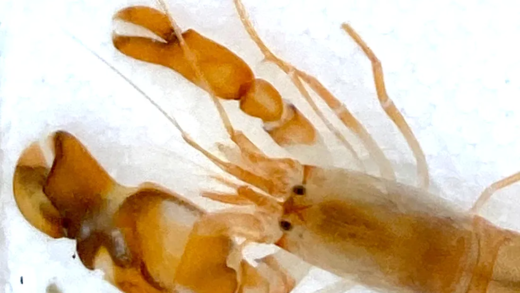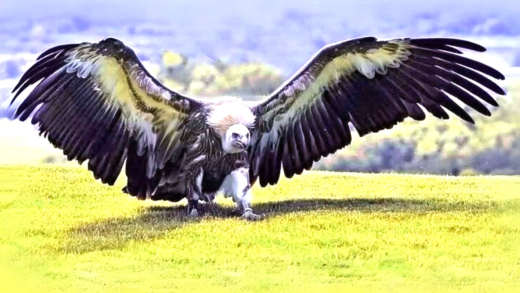Capybaras are the largest rodents in the world, known for their social nature and unique behaviors. They weigh up to 150 pounds and prefer habitats near water. Unlike smaller rodents like mice and hamsters, capybaras live in groups and exhibit fascinating traits, such as mutual grooming and diverse communication. Their gentle demeanor has made them cultural icons, celebrated in media and social platforms.
The Capybara: Meet the Giant Rodent
The largest rodent in the world is none other than the capybara. This fascinating creature can be found in various regions of South America, particularly near water bodies like rivers, lakes, and wetlands. With its unique appearance and friendly demeanor, the capybara stands out as a social animal, often seen in groups.
Capybaras are not just big; they can weigh between 77 to 150 pounds (35 to 66 kg). Their size, combined with their gentle nature, makes them popular among people who encounter them in their natural habitats. Unlike many other rodents, capybaras have a unique set of behaviors that allow them to thrive in both wild and semi-domesticated environments.
Size Matters: How Much Does a Capybara Weigh?
When discussing the weight of the largest rodent, capybaras are impressive. Adult capybaras can reach weights of up to 150 pounds, making them significantly heavier than other rodents like mice or hamsters. Their size can vary based on their habitat and diet, but they generally fall within this weight range.
This weight contributes to their robust build, which includes a barrel-shaped body, short legs, and a large head. The size of capybaras not only makes them the largest rodent, but also allows them to have a unique role in their ecosystems. They can graze on grasses and aquatic plants, helping to maintain the health of their environments.
The Poop Paradox: Why Do Capybaras Eat Their Own Feces?
One of the more unusual behaviors observed in capybaras is their tendency to eat their own feces. This behavior, known as coprophagy, serves a specific purpose. Capybaras have a unique digestive system that allows them to extract nutrients from their food efficiently, but they also benefit from consuming their feces.
By eating their own droppings, capybaras can maximize nutrient absorption, particularly from the fiber-rich grasses they consume. This behavior is not uncommon in herbivores, as it helps them gain essential nutrients that may have been missed during the first digestion process. Understanding this habit sheds light on the capybara’s survival strategies in the wild.
Fun Facts About Capybaras: More Than Just a Big Rodent
The largest rodent is not just known for its size; capybaras have a plethora of fascinating traits. Here are some interesting facts:
- Social Creatures: Capybaras are incredibly social animals. They often live in groups of 10 to 20 individuals.
- Unique Communication: They communicate through a variety of sounds, including barks, whistles, and purrs, much like dogs.
- Swimmers: Capybaras are excellent swimmers. Their webbed feet help them navigate through water, and they can hold their breath for up to five minutes.
- Gentle Giants: Despite their size, capybaras are known for their calm and friendly demeanor, often being seen resting alongside other animals.
- Long Lifespan: In captivity, capybaras can live up to 12 years, while in the wild, their lifespan is typically shorter due to predation.
These fun facts reveal that capybaras are more than just big rodents; they are complex creatures with unique behaviors and social structures.
Where Do Capybaras Call Home?
The habitat of the largest rodent spans various regions in South America. Capybaras prefer habitats near water sources, such as:
- Rivers: They thrive in areas where they can easily access water.
- Lakes: Lakes provide a safe environment for capybaras to swim and cool off.
- Wetlands: These areas offer abundant vegetation for grazing.
Capybaras are highly adaptable and can also be found in savannas and forests, but they always remain close to water. Their preference for wet environments is crucial for their survival, as it provides food and protection from predators.
What’s on the Menu? The Capybara’s Diet
The diet of the capybara consists mainly of grasses and aquatic plants. They are herbivores, meaning they eat:
- Grasses: Capybaras consume a variety of grass species, which are abundant in their natural habitats.
- Aquatic Vegetation: They enjoy munching on water lilies and other plants found in wetlands.
- Fruits and Vegetables: Occasionally, they will eat fruits and vegetables when available, adding variety to their diet.
Capybaras have a unique digestive system that allows them to efficiently process high-fiber foods. They graze for most of the day, ensuring they get enough nutrients to maintain their large size.
Comparing Capybaras to Mice and Hamsters: What’s the Difference?
The largest rodent, the capybara, stands in stark contrast to its smaller relatives, such as mice and hamsters. While all three belong to the rodent family, their size, habitat, and behaviors are quite different. Capybaras can weigh between 77 to 150 pounds, significantly larger than the typical mouse or hamster, which usually weighs a few ounces to a couple of pounds.
Here are some key differences:
- Size: As mentioned, capybaras are substantially larger than mice and hamsters, making them the largest rodent in the world.
- Habitat: Capybaras prefer wetland areas and are excellent swimmers, while mice and hamsters are terrestrial and often inhabit dry environments.
- Social Behavior: Capybaras are social creatures that live in groups, whereas mice can be solitary or social, and hamsters are generally solitary, preferring to live alone.
- Diet: Capybaras are herbivores that graze on grasses, while mice and hamsters have more varied diets, often including grains and fruits.
These differences highlight the unique adaptations of capybaras that enable them to thrive in their specific habitats, making them stand out among the rodent family.
Unique Capybara Behaviors: What Makes Them Special?
Capybaras exhibit a range of unique behaviors that distinguish them from smaller rodents. One remarkable behavior is their social structure; capybaras live in groups, often consisting of 10 to 20 individuals. This social nature fosters a sense of community and cooperation.
Additionally, capybaras are known for their grooming habits. They not only groom themselves but also engage in mutual grooming with other capybaras, strengthening social bonds within the group. Another fascinating behavior is their ability to communicate through various sounds, including barks and whistles, which serve different purposes in their social interactions.
Moreover, capybaras are incredibly adaptable animals. They can often be seen resting in the water, using it as a means to cool off, and they have a unique way of dealing with threats. When alarmed, they can remain submerged with just their nostrils above water, making them less visible to predators.
These behaviors reflect the capybara’s adaptation to its environment, allowing it to thrive in both wild and semi-domesticated settings.
Capybaras in Popular Culture: A Rodent Icon
The capybara has become something of a cultural icon, appearing in various forms of media and popular culture. Its gentle demeanor and social nature have endeared it to many, leading to its portrayal in cartoons, internet memes, and even merchandise. Capybaras are often depicted as friendly and approachable, making them a favorite among animal enthusiasts.
In recent years, capybaras have gained popularity on social media, with countless videos showcasing their interactions with other animals, such as birds and dogs. This representation highlights their unique personality and social behaviors, captivating audiences worldwide.
Furthermore, their presence in zoos and wildlife parks has increased awareness about their conservation status and the importance of protecting their natural habitats. As the world’s largest rodent, capybaras continue to fascinate and charm people, solidifying their status as a beloved animal in popular culture.





Comments are closed.